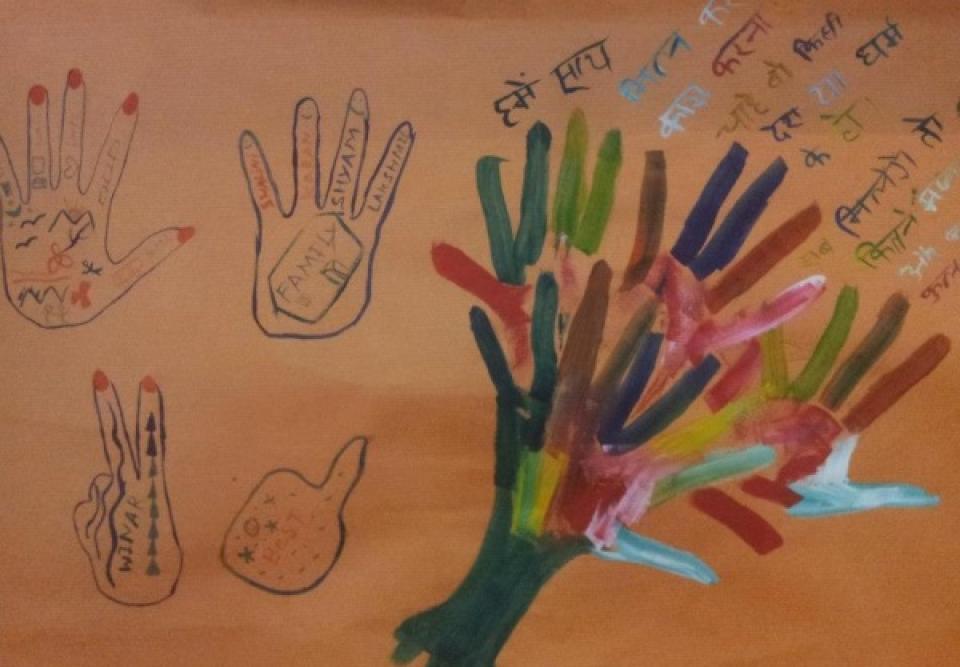
Gladys Charowa was left permanently wheelchair bound after a car accident in 2001 in Zimbabwe. She represents one of many women who, in the face of personal tragedy, dedicated herself to her community. A single mother and executive director of Disabled Women Support Organisation, Charowa helps women and girls in her community overcome stigma, close education gaps, and receive support associated with their disabilities. “Society views disabled people as useless liabilities that have no role to play in society,” Charowa says. This sentiment rings true worldwide, especially in regards to reproductive health and rights.
No group of individuals has been as severely restricted, with respect to their reproductive rights, as women with disabilities. Located overwhelmingly in the global South, where most disabled people live, women with disabilities encounter levels of multidimensional discrimination that are unparalleled by other groups in the world.
Women with disabilities experience unique obstacles to their ability to assert their reproductive rights. These obstacles are both informational and infrastructural in nature.
They lack accessible information and face communication difficulties in expressing their need for or obtaining dedicated reproductive health care, which may be attributed to both physical and communication barriers. They also tend to rely on carers, who, in turn, may abuse a position of power to impose their own views on reproductive health.
Most severely, women with disabilities often live in societies where misconceptions prevail about their inferior social roles and sexual activity. That disabled women are not sexually active, and, therefore, do not need access to reproductive care, is a common thread throughout many ethnographies on the subject.
The struggle towards a more inclusive and supportive world for women with disabilities is underway. This same effort must be carried out online. Though the internet has, for many marginalised groups worldwide, lessened barriers to access and yielded substantial expressions of solidarity, women with disabilities have found themselves systematically stifled once again.
The internet, as it stands today, represents a platform which in no way suits or includes the needs of people with disabilities. Despite the significant potential for inclusivity that the internet represents, the world’s largest minority, people with disabilities, experiences shortcomings in accessing the internet in a full, meaningful and inclusive way.
Technological barriers actively prevent people with certain disabilities from going online; individual impairment-associated challenges are incompatible with the internet, such as sequential reasoning and point-and-click interfacing. Voice-over technology and touch screens represent an added cost to consumers and an additional hurdle to technologists, despite the fact that such advancements could open their market to an additional billion consumers worldwide.
Over one hundred governments have signed and ratified the United Nations Convention on the Rights of Persons with Disabilities , which entails a commitment to the “elimination of obstacles and barriers to accessibility,” including to information, communications, and electronic services. Despite this significant recognition of the obstacles to access information electronically by people with disabilities, mechanisms to increase effectiveness of use, decrease environmental barriers, and encourage independence have been seldom acted upon.
It is not coincidental that the rallying cry of the global movement of persons with disabilities and their allies is “Nothing about us without us.” This principle must apply to internet accessibility as well. Through creating new digital technologies and updating existing web content to embody the Seven Principles of Universal Design – equitable use, flexibility of use, simple and intuitive use, perceptible information, tolerance for error, and size and space for approach – the internet can be reconsidered as a space that is accessible, inclusive and convenient for all persons of all abilities.
We must not only take these participatory principles into consideration when developing new technologies; we must also enhance the current usability of the internet. W3C’s Web Content Accessibility Guidelines represent one example of accessibility guidelines whose recognition and implementation could unleash the potential of the internet to benefit and include persons with disabilities.
These accessibility standards contain specific best practices pertaining to web content, software, performance evaluation and the interaction between browsers, media players and assistance technologies. According to the Internet Society, these standards are being increasingly mandated by governments and industry professionals alike; this proliferation will open doors to persons with disabilities worldwide.
There are several organisations that are working to bridge the technology and content gaps for women with disabilities. SexualityandDisability.org represents one such example. This online resource was established through New York- and Mumbai-based organisations CREA and Point of View to discuss a wide range of topics related to sexuality, containing comprehensive information on subjects ranging from body image to sexual activity, relationships and having children, and contains features to ensure accessibility for all people with disabilities. They create content, engage in discussions, and provide resources with the strong conviction that “women who are disabled are sexual beings – just like any other woman.”
Another community that is leveraging the internet to provide online environments for women with disabilities to engage in issues of reproductive health and rights is called GimpGirl. Based in Chicago, it is dedicated to “bringing women with disabilities together in the spirit of support, positivity and inclusivity.”
Garnering strength from the global disability and women’s rights communities, GimpGirl has been providing online weekly support from women with disabilities for almost two decades. They also hold online events in Second Life and IRC, a screen-ready friendly text chat room for women with disabilities to discuss issues including sexual and reproductive health, relationships, and domestic violence. The environments GimpGirl creates encourage an attitude of self-advocacy and self-efficacy that are also key to principles of Universal Design.
As illustrated by these examples, sexuality, sexual identity and sexual health do not relate solely to health and reproduction, but are rather intertwined with broader notions of integration, inclusion and wellness. This is why advocates, policy makers, journalists and also the private sector must include women with disabilities in the creation of infrastructure and policies to enable the full realisation of their rights.
- 7138 views





Add new comment